The culture and the socialstructure of the Nagas vary from one tribal community to another. There was a lot of inter- village quarrels happening in earlier days for choosing the sites for the village and was very much influenced by considerations of defensive strategy. The houses were usually built on the top of the hills enclosed with stone walls and heavy wooden gates with deep ditches dug around the wall. The dance of the Naga's is an example for the proof of the vibrant and dynamic cultural traditions of the north eastern state of India. The folk dances of the Naga's accompanied with excellent folk songs and native musical instruments clearly indicate the rich cultural heritage of the people of Nagaland. The dance of the Naga's is mainly dominated by the male members of the community who are fully dressed in traditional costumes and they usually dance in groups more preferably in closed circles. Each tribal community has their unique style of dance form. Some of the famous dances of the people of Nagaland are Zeliang dance, Cock dance, Fly dance, Cricket dance and Bear dance. An integral part ofsocial and cultural lifestyle of the native population of Nagaland, the unique dancing styles of the state are performed with proper props of dao, shield or spear. The folk music of the Naga's again shows diversity in their melodious traditionalrhythm depending on the various communities of the tribal people. The music composed is mainly based on features like religious beliefs, romance or bravery.
The soft and sweet spoken Naga people do not mind spiciness in their food. The kitchen in every household of Nagaland has some good deal of spices stored. Even the ginger used by the people in this region is different from the regular one. The spiciness and aroma which their ginger comprises are hard to find elsewhere. Nagaland is the home of Bhut Jolokia, one of the spiciest chillies in the world.
The people here prefer steaming their food to frying. All the tribes have distinct cuisines which use meat, fish and fermented products extensively. The locally grown herbs, ghost peppers, ginger and garlic are used a lot in almost all the dishes.
Smoked pork cooked with fermented soya bean is the dish of state cherished along with rice and chutney called Tathu. The other common dishes are snails cooked with pork and silkworm larvae, Naga curry made with crushed potato and tomato.
. 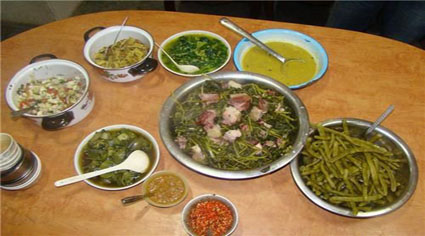
|
|
The main attire which falls in the costume of the Naga's is the shawls. The women mainly opt for plain blue cloth and a white cloth with black marginal bands which varies in its breadth. Usually the ladies of Angami community wear a petticoat called neikhro, a sleeveless top called vatchi and a white skirt called pfemhou. The Zemei women wear white-coloured clothes and skirts with very narrow black and red border. Men wear black kilt, decorated with embroidered cowries in three or four lines. Shawls of Lothas are graded by the number of gennas or festivals arranged by the wearer. The chief priest of the community wear phichu-pfe. Rongsu shawl is wearable only by those who have a glorious heritage of Mithun sacrifice, committed by the forefathers and also by the individual himself. There is a wide spectrum ofshawls woven by the Yimchunger Nagas. Rongkhim is a fantastic shawl, wearable by a venerated warrior only.
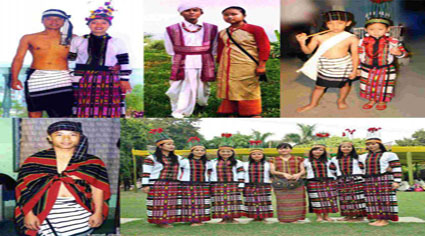
|
|
Owing to the joie de vivre nature of Nagas, dance and music are an essential part of their culture. The tribal dance and music will set your feet tapping. The dance is generally performed in groups on the folk songs perfectly synchronised with music through various musical instruments such as Asem (drums), Tati, Mouth Organ, Bamboo Flute, etc. The tribal dance becomes more extravagant by the virtue of the colourful and unique traditional costumes and jewellery. The folk songs narrate the stories of bravery, romance and historic incidents. Certainly, this place has some fantastic taste in dance and music which tourists tend to cherish.
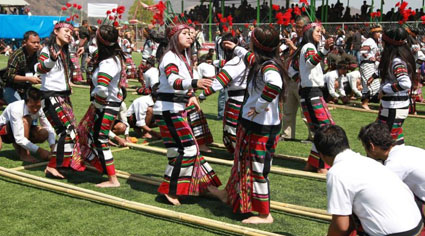
|
|
There is an essence of celebration in the air throughout the year in Nagaland. The diversity of tribes in the region leads to a yearlong ambience of joy through various fairs and festivities organised from time to time. Some of the most important festivals celebrated by different tribal groups are Suhkruhnye, Yemshe, Sekrenyi, Moatsu Mong, Bushu and many others. The general festivals such as Christmas, New Year, etc are also celebrated in accordance to the tribal festivals.
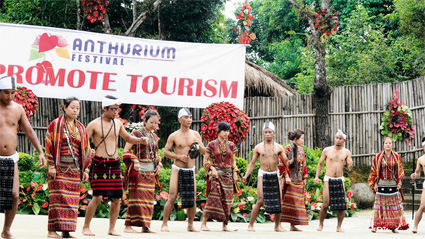
|
|
This people from the same community do not marry and also in case of any relationship between them then it considered as a social evil. In the Angamis community if a young boy shows a liking towards a girl then he conveys it to his father after which a friend is send to confirm the wishes of the elders. It the parents on the other side also agree then the bridegroom's father puts the matter further to the test by strangling a fowl and watching the way in which it crosses its legs when dying. If the legs are placed in an inauspicious attitude, the match is immediately broken off. If things go well the marriage is fixed but the girl also has the right to break the marriage even ifshe has some inauspicious dream. The people of the Mongsen tribal community follow a strange custom wherein once a boy and girl are engaged they are allowed to go on a trading expedition for twenty days and if it turns out to be profitable then the marriage is fixed whereas if it is a loss then the marriage is broken. Most of the tribal community The people of the Sema community give lot of regard and care for the girls for the only reason that a girlfetches a handsome price at marriage and this price would be substantially reduced ifshe got involved in a scandal otherwise they end up paying fine.
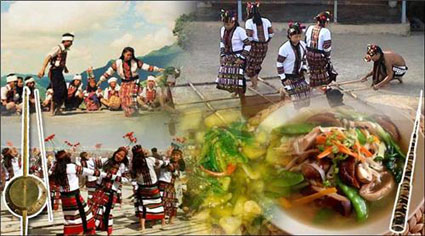
|
|
Though the main occupation of the Naga people is irrigation, they have been blessed with dexterity, especially the women. The ordinary metals such as iron, brass and tin are used to make exquisite jewellery in the form of armlets, neckbands, bangles and much more. Beads are also used to make beautiful necklaces.
The Nagas have carried their traditional art of weaving by knitting unique colours and designs producing shawls, shoulder bags, table mats, etc which reflect the integrity and soul of their ancient dynamics. The present generation has stepped into the fashion industry producing the fabrics that represent the amalgamation of ancestral motifs and modern appeal. The tourists get mesmerised by such a beautiful display of handicrafts and tend to buy a lot of souvenirs. The craft is not just limited to fabric and metals, wooden carvings and bamboo works are also an essential part of the craft of these people.
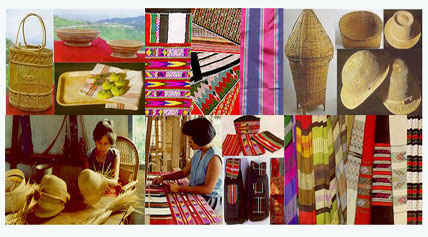
|
|
